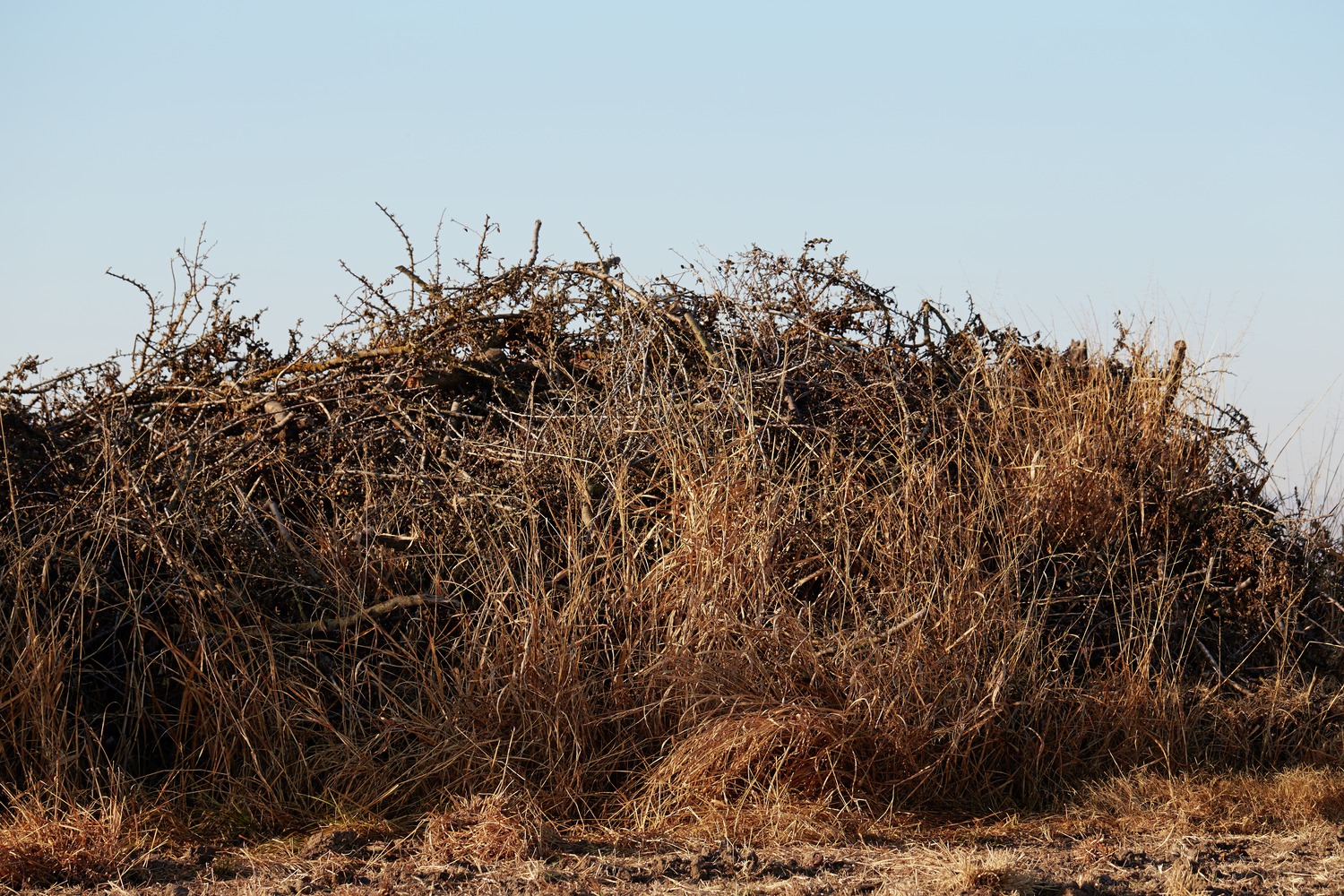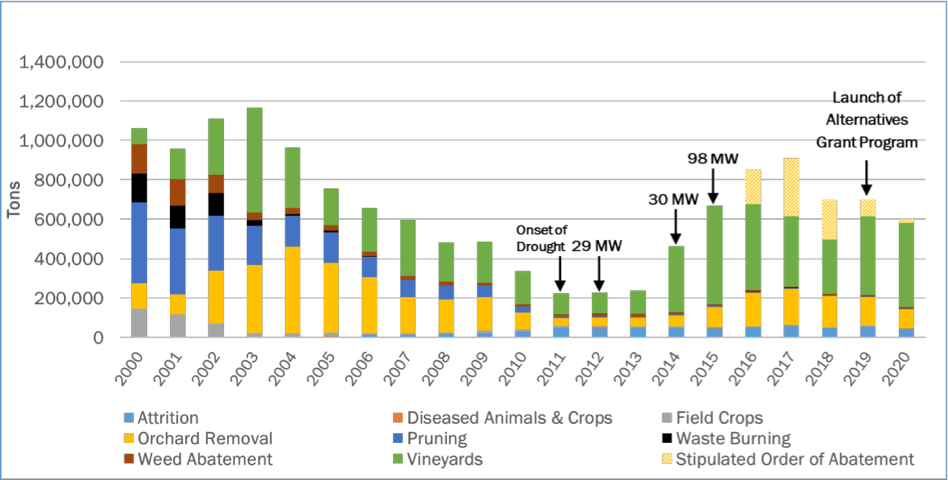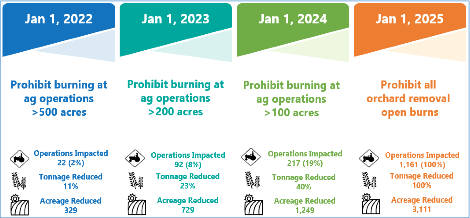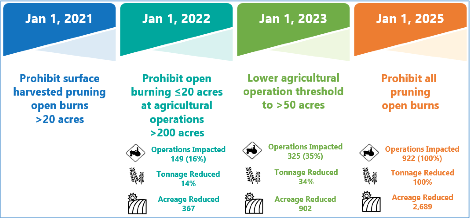
The end to agricultural burning is now in clear sight for the San Joaquin Valley. Beginning Jan. 1, 2025, nothing but diseased trees, and possibly some attrition, will be allowed to be burned after that date. The California Air Resources Board (CARB) set forth this mandate when they mandated amendments to the proposed partial phaseout from the San Joaquin Valley Air Pollution Control District. CARB was pressured by environmental activists leveraging major smoke impacts from this past year’s devastating wildfires that lasted for months. The activists jumped all over the opportunity, which coincided with the Valley Air District’s required five year report to CARB, and demanded that ag burning be ended once and for all.
Under state law (SB 705), open burning for agricultural crop categories are required to be phased out under a prescribed schedule, unless certain findings are made with respect to the availability of funding and economically feasible alternatives to open burning. As required under District Rule 4103, every five years, the District must review and make recommendations to the Board regarding the phase-out of agricultural burning in the Valley.
In accordance with these requirements, in December 2020, the Governing Board approved the 2020 Staff Report and Recommendations on Agricultural Burning (2020 Report) and directed staff to submit this report to the California Air Resources Board (CARB). On Feb. 5, 2021, CARB staff published their recommendations regarding the District’s 2020 Report, and on February 25, CARB approved their staff’s recommendations.
This CARB action included full short-term concurrence with the District’s 2020 Report and recommendations through Aug. 31, 2021, longer-term concurrence with many of the District’s 2020 Report recommendations through 2025, and additional criteria for longer-term concurrence beyond Aug. 31, 2021, including a timeline for the near-complete phase-out of open burning for the majority of remaining crop categories by Jan. 1, 2025 (with some exceptions such as diseased crops.) Additionally, in supporting their concurrence action, CARB highlighted and affirmed the critical role that the state plays in securing needed state incentive funding to support the transition and addressing barriers to the establishment of new bioenergy solutions.
Driving attention to this issue is the fact that burning had actually been on the increase due to the closure of 15 of the Valley’s 20 biomass plants, along with the recent increase in the pullout of vines that contain wire that cannot be chipped or shredded. But nonetheless, SB 705 is state law, and the District and State have to continue to find a way to end the practice of agricultural burning. The following is a summary description of the District’s revised plan to address CARB’s comment and is focused on those portions of the plan that address tree nuts.

Orchard Removals
In the District’s 2020 Report, the District found that there were no economically feasible alternatives for small orchard removals due to fixed and minimum contractor costs. In addition, the availability of contracts for small orchard removals remains an issue. Contractors often refuse small removal requests as they are not a priority over large removals. Wait times for small removals are often extended in comparison to a larger removal. Recognizing these feasibility issues, the District recommended postponing the prohibition of burning orchard removals ≤15 acres at a single location per year.
In response to the District’s 2020 Report, CARB’s assessment included recommendations to introduce prohibitions on burning of ≤15-acre removal projects at large agricultural operations, effective in 2022, followed by phased-in prohibitions for small agricultural operations. In accordance with CARB’s recommendations, the District has developed a recommended phase-out schedule for the open burning of small orchards.
The proposed schedule requires the phase-out of open burning for large agricultural operations by January 1, 2022 and progressively more stringent requirements for the phase-out of open burning for smaller operations (providing the most flexibility for smallest operations.) Consistent with CARB mandates, the proposed schedule includes the complete phase-out of open burning of small orchard removals by January 1, 2025.
Surface-Harvested Prunings
In the District’s 2020 Report, the District found that there were no economically feasible alternatives to open burning for surface-harvested prunings from almond, walnut and pecan crops without incentives. However, to reinforce the ongoing transition to alternatives, the District recommended a phase-out schedule to prohibit open burning ≤20 acres of total prunings per year for almond, walnut and pecan crops for agricultural operations whose total nut acreage at all agricultural operation sites > 50 acres. CARB’s assessment provided concurrence with the District’s determinations. In addition, to support the near-complete phase-out of open burning by January 1, 2025, the District has included an additional recommendation in this supplemental report to phase out all remaining surface-harvested open burns effective January 1, 2025.

Funding
All of this hinges on the State coming up with funding to help growers achieve this new mandate. The state knows full well, and admitted so, when CARB’s recommendations were approved. A coalition of agricultural groups, led by the Almond Alliance, California Citrus Mutual, California Association of Winegrape Growers, California Fresh Fruit Association, Western Agricultural Processors Association, California Farm Bureau and the Nisei Farmers League, is working hard to obtain the funding in this year’s state budget.
The coalition submitted a request for $290 million in funding to assist in three critical areas:
$135 million for Alternatives to Ag Burning Incentives Program. This includes direct incentives to not burn for up to $600 per acre for chipping with soil incorporation and up to $300 per acre for chipping without soil incorporation. There is a maximum of $60,000 per grower, per calendar year.
$55 million for Air Curtain Burners and Chipping, Shredding and Spreading Equipment.
$100 million for Bioenergy/Bio-Economy Investment Projects.
At the time of writing this article, the Governor had included $150 million in the May Revise Budget, and the Senate had put forth $180 million for ag burning. A full-scale effort is underway to get this increased to as close to $290 million as possible.
In the end, a long-term solution to replacing biomass plants is necessary. Not only will it help the agricultural industry, but it could also be a significant help to the tree mortality problem in the forests as well. Again, this all hinges on the Governor and the legislature coming through with the money. Stay tuned.
















